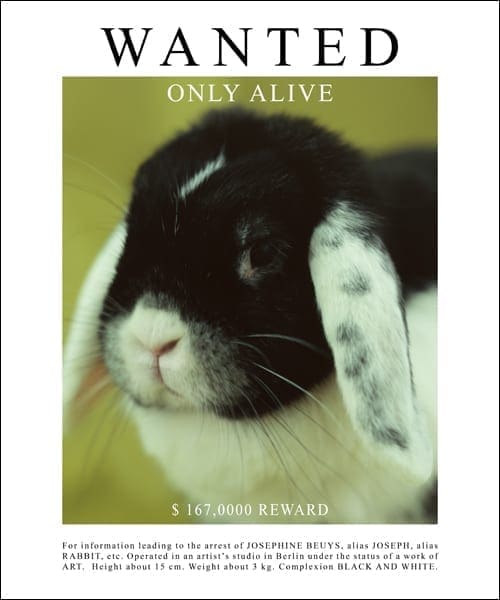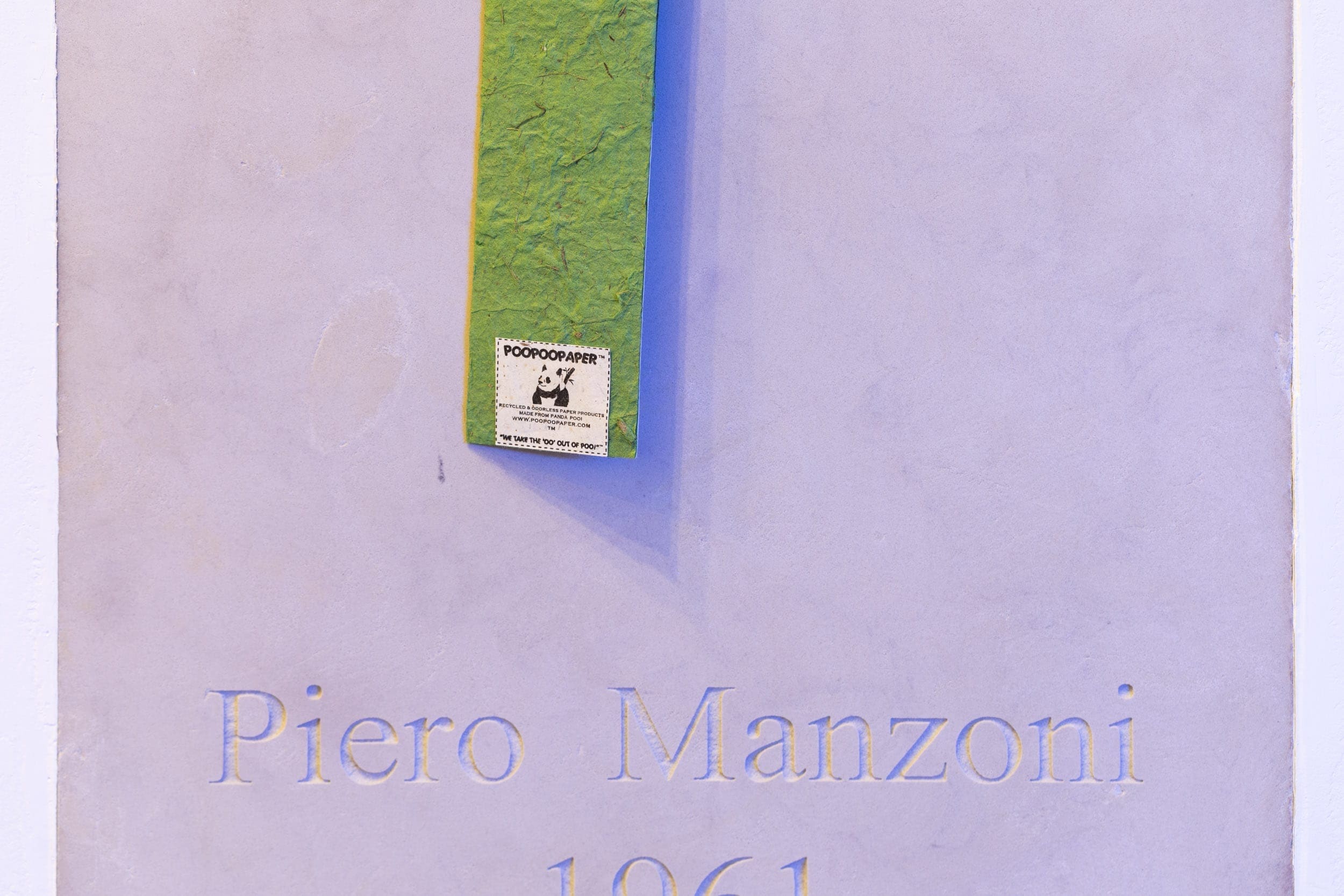Everything about the contemporary is panda: Piero Manzoni 1961
von
Michal Martychowiec
Jahr
2016
Maße
47 × 37 × 3 cm
Material
Steinplatte, recycelte Panda-Exkremente
Preis
auf Anfrage
Everything about the contemporary is panda: Piero Manzoni 1961
Any objects like excrements, blood, bodily fluids have a stigma of a taboo and would be normally considered at the very least unattractive. But then relics of saints which are their physical remnants are another story. In 1961 Piero Manzoni created a work developed from the concept of the readymade and closely linked to these ideas - “The artist’s shit”. A tombstone for Manzoni’s idea memorising the date of its creation 1961 is being decorated with a bookmark (appearing like a talisman) hanging from what looks like a broken nail. The bookmark is made of recycled panda excrements (as it read on the packaging “made with real panda poo”) and was purchased in a souvenir shop among many other products being advertised to be made of the same material.
-
In allen Werken der Serie Everything about the contemporary is panda begegnet der Panda-Avatar Themen und Werken unserer Kulturgeschichte. Wir treffen auf das Turiner Grabtuch, einen Wanderer über dem Nebelmeer, die obligatorische Banane taucht auf und der italienische Klassiker Piero Manzoni ist als Grabplatte in die Wand eingelassen. In einer Reihe von Fotografien sehen wir den berühmten Berliner Panda Bao Bao (mittlerweile im Naturkundemuseum) in Kombination mit enigmatischen Textfragmenten. Diese stammen von Künstlerpersönlichkeiten der Vergangenheit und Gegenwart (Bethan Huws, Kasimir Malewitsch, Francisco de Goya, Joseph Beuys u. a.), die Martychowiec als Symbole für bestimmte historische Tendenzen einsetzt.
Der Panda ist im Werk Martychowiecs ein entlarvendes Symbol der Dekadenz im Mittelpunkt einer zeichenlosen und leer gewordenen Moderne. Er steht für den letzten Menschen am Ende der Geschichte; unfrei zwischen neoliberaler Normativität und der Entkopplung von seinem eigenen historisch-kulturellen Gewordensein. Als popkulturelles Symbol omnipräsent, kann er auch als ein Signum des chinesischen Aufstiegs und chinesischer ‚Soft Power‘ interpretiert werden. Ihre biologische Nische fanden die Pandas durch eine genetische Wirbelsäulenmutation, die ihnen erlaubte, komfortabel zu sitzen. Denn Bambus ist nährstoffarm und muss 16 Stunden am Tag gefressen werden. Die, eigentlich schon ausgestorbene Spezies, lebt überwiegend in sogenannten Panda-Villas. Dort werden sie von Wärtern und Psychologen rundum versorgt. Das Gros der Neuzeugungen geschieht durch künstliche Befruchtung.
Weitere Werke des Künstlers

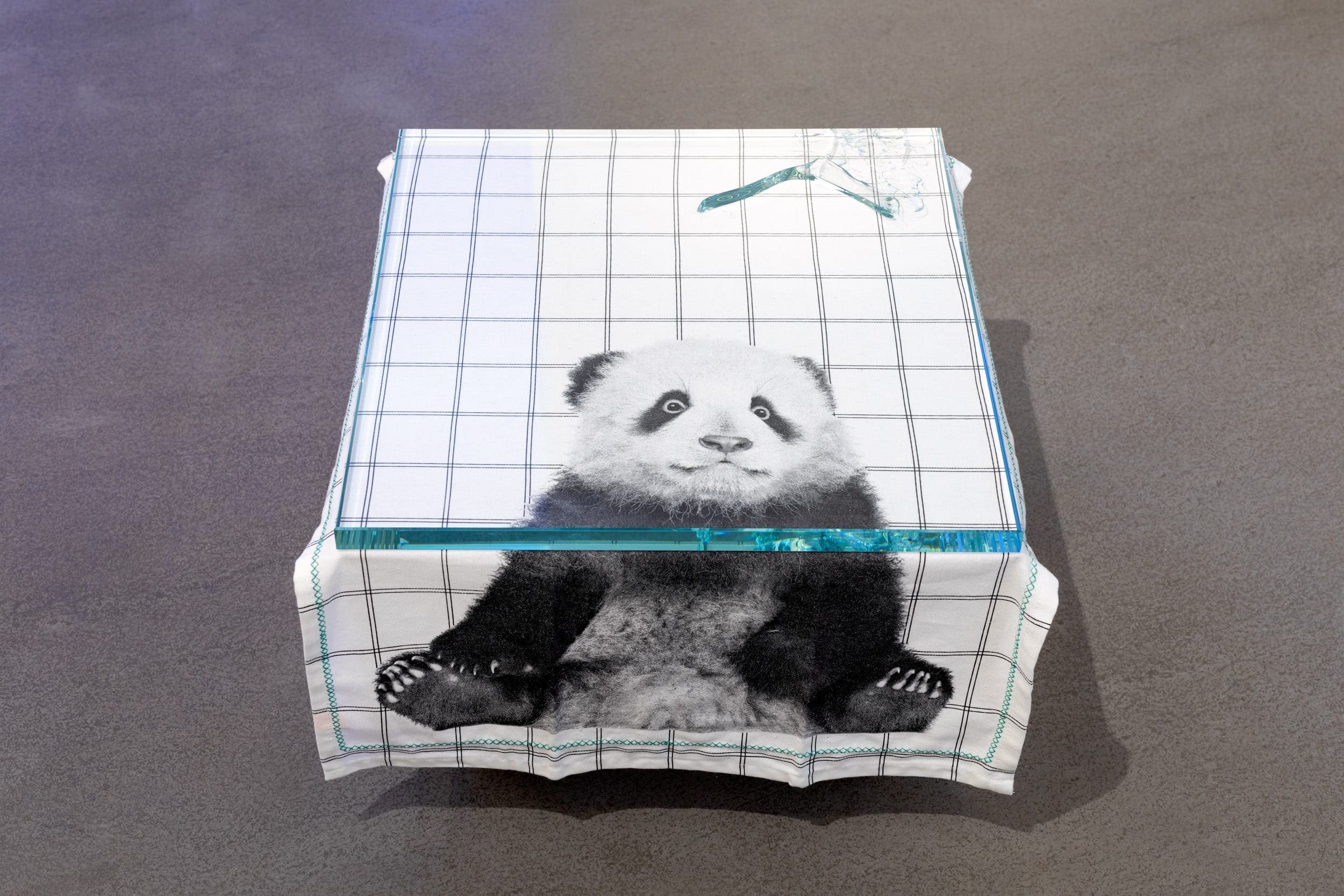


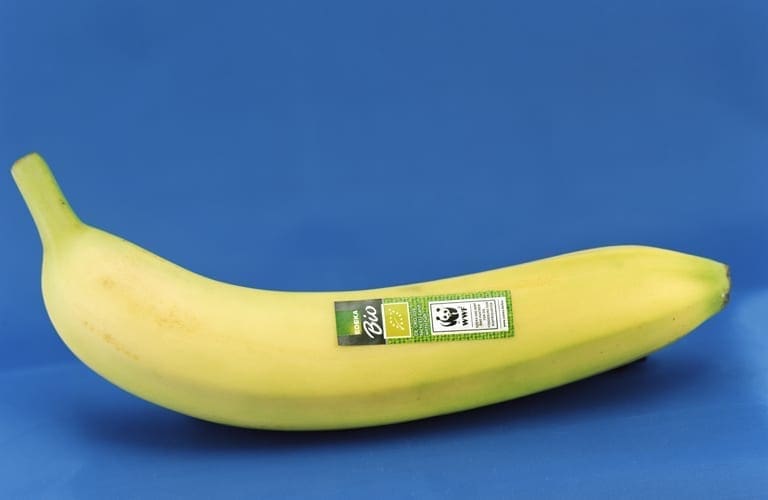
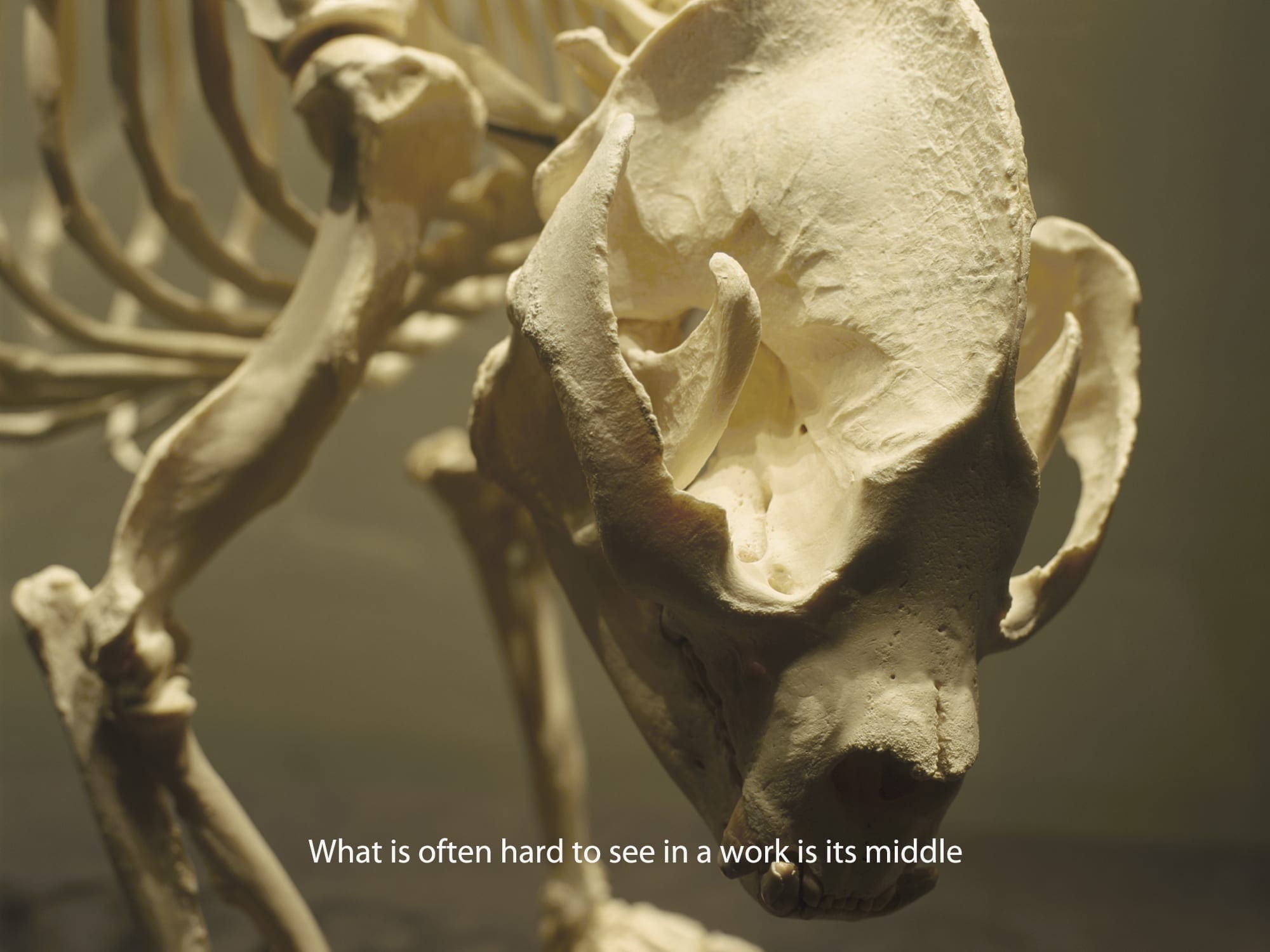
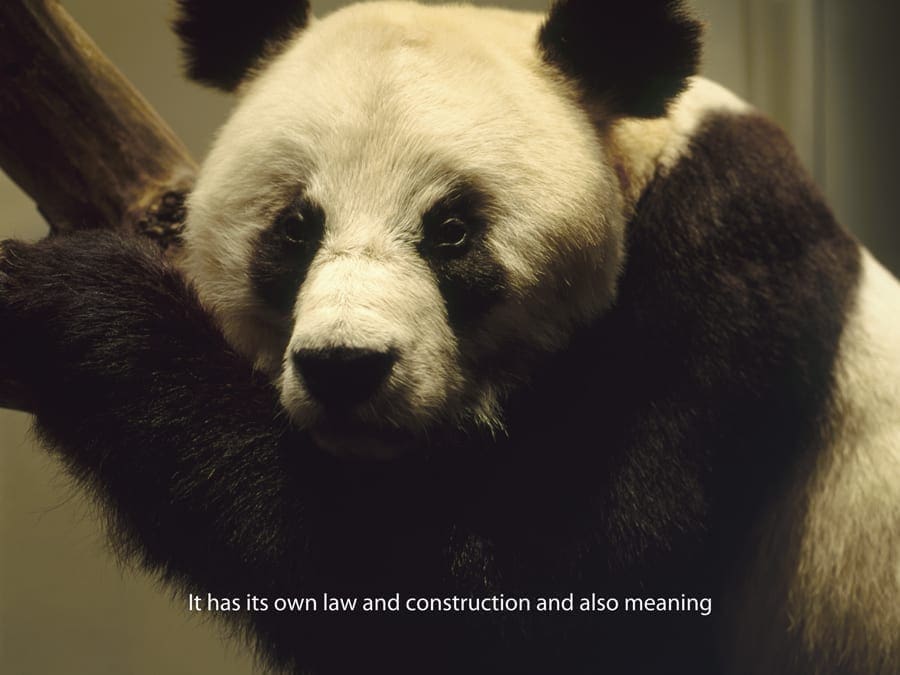


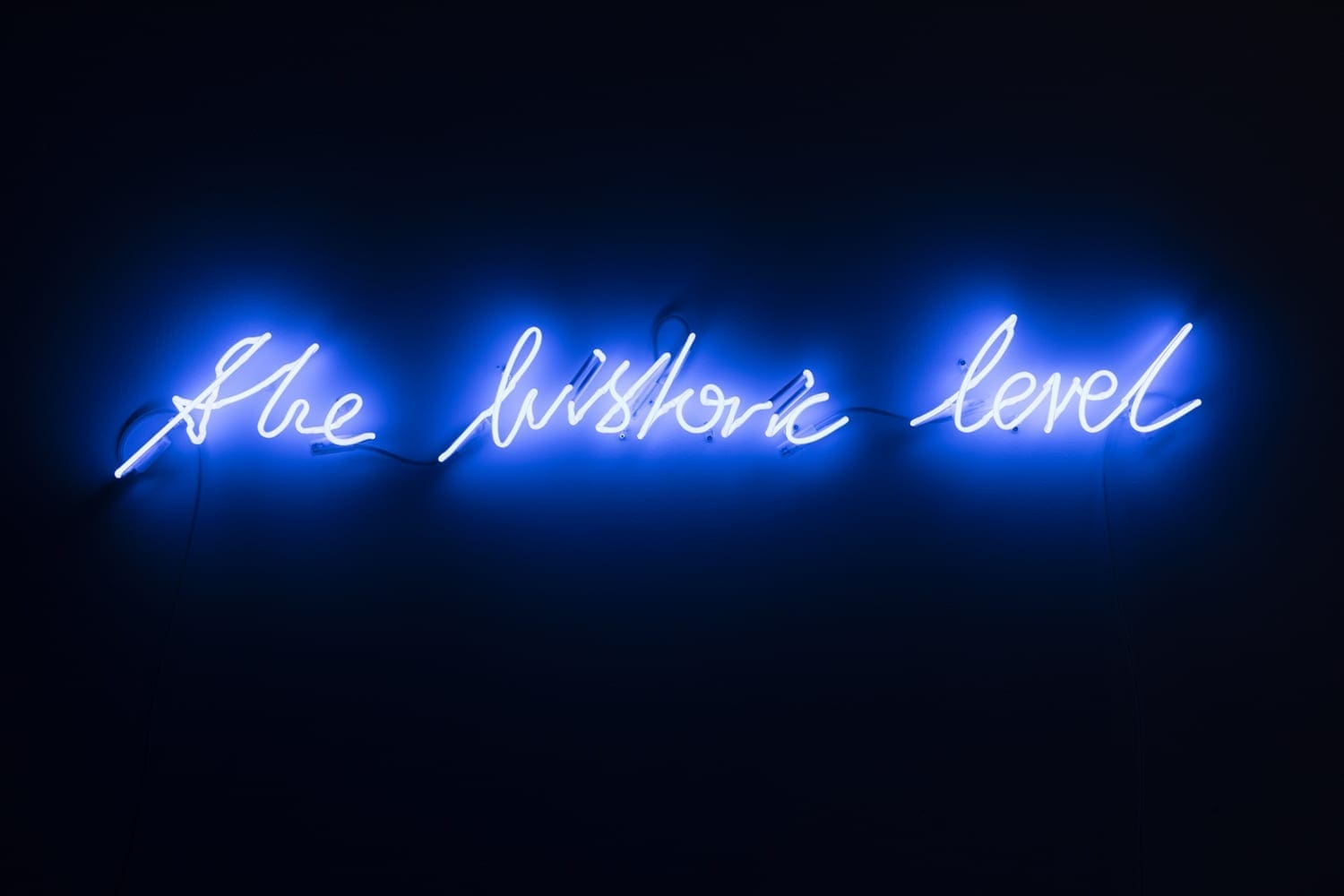

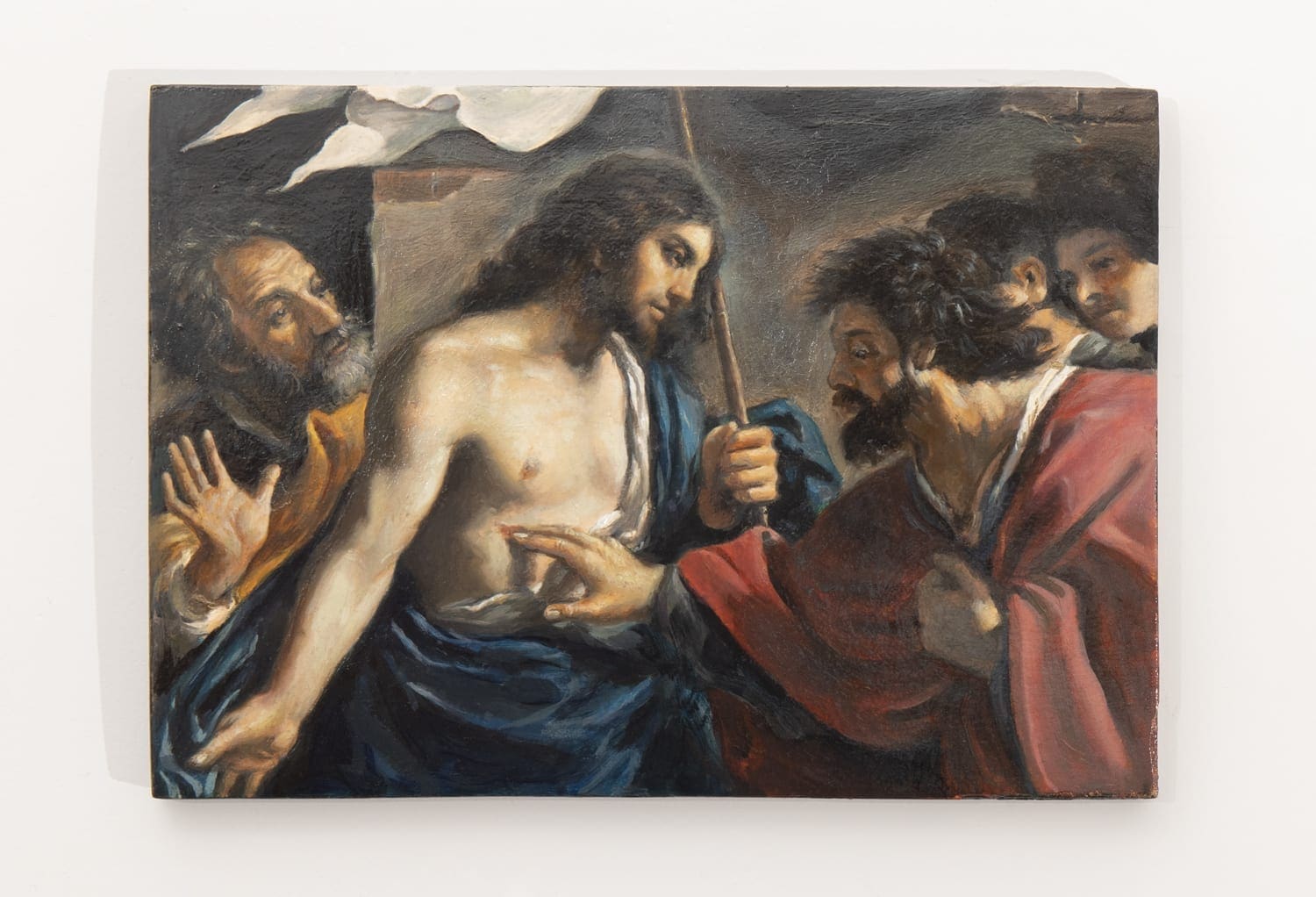


Name All is history
Größe 25 x 75 cm
Jahr 2012

NameBlue#1
Größe 175 x 220 cm
Jahr 2013
Name Blue#5
Größe 175 x 220 cm
Jahr 2016

Name What remains the poets provide
Größe 130 x 100 cm
Jahr 2018

Name Shred of Turin
Größe 29 x 44 x 47 cm
Jahr 2018
Name Everything about the contemporary is panda: Piero Manzoni 1961
Größe 75 x 100 cm
Jahr 2016
Name After Wanderer above the Sea of Fog
Größe 47,5 x 43,5 cm
Jahr 2020
Name Everything about the contemporary is panda
Größe 40 x 60 cm
Jahr 2016
Name Everything about the contemporary is panda (Bethan Huws)
Größe 75 x 100 cm
Jahr 2017
Name Everything about the contemporary is panda (Kazimir Malevich)
Größe 75 x 100 cm
Jahr 2017
Name Everything about the contemporary is panda (Francisco Goya)
Größe 75 x 100 cm
Jahr 2017
Name Everything about the contemporary is panda
Größe 75 x 100 cm
Jahr 2017
Name the historic level
Größe 23 x 127 cm
Jahr 2017
Name Has Marcel Duchamp changed the world?
Größe 25 x 220 cm
Jahr 2014
Name The incredulity of Saint Thomas: Limited by history
Größe 15 x 21 cm (exkl. zerbrochene Isolierglasscheiben)
Jahr 2020
Name The incredulity of Saint Thomas
Größe 76 x 61 x 3 cm
Jahr 2015/2020
Name The incredulity of Saint Thomas
Größe 36,5 x 29,5 x 2 cm
Jahr 2015/2020
Name Josephine 2017 (Blue)
Größe 60 x 50 cm
Jahr 2017

Name Josephine 2018 (Red)
Größe 60 x 50 cm
Jahr 2017
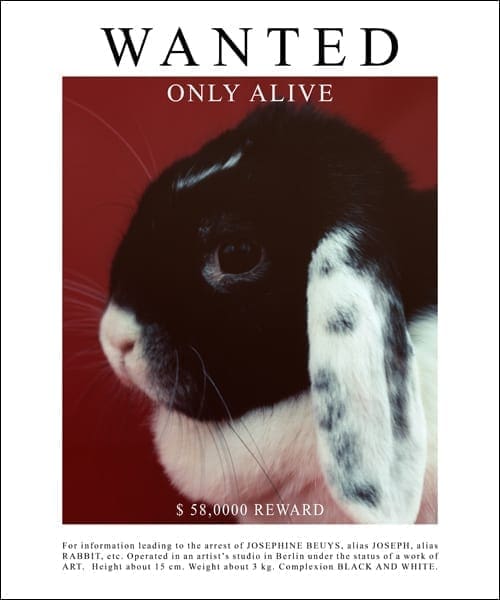
Name Josephine 2019 (Green)
Größe 60 x 50 cm
Jahr 2017
